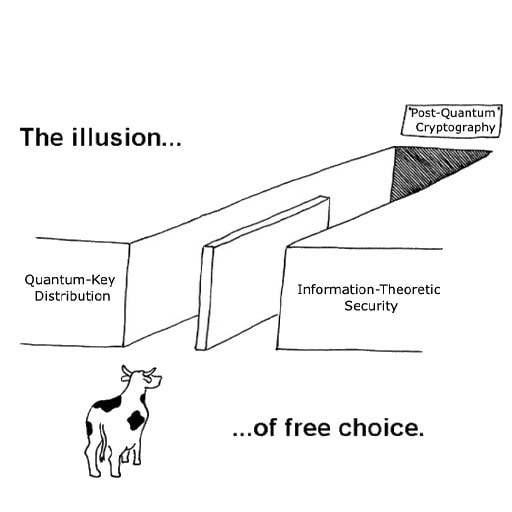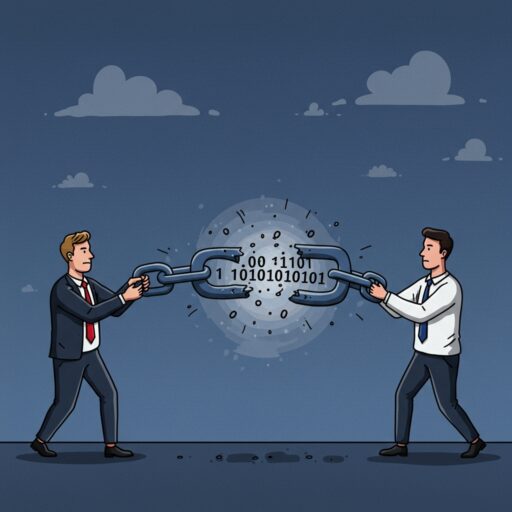The development of quantum computing is driving the need for new cryptographic methods that can resist future quantum-based attacks. Among the most promising techniques in post-quantum cryptography are Module Lattice-based Key Encapsulation Mechanisms (ML-KEM) and Module Lattice-based Digital Signature Algorithms (ML-DSA). These methods leverage the hardness of lattice-based problems to provide secure encryption and authentication. Integrating Quantum Random Number Generators (QRNGs) into these cryptographic schemes can significantly amplify their power by enhancing the quality of randomness, which is critical for ensuring strong security.
Understanding QRNG and its Role in Cryptography
A Quantum Random Number Generator (QRNG) utilises the inherent unpredictability of quantum mechanical processes to generate random numbers. Unlike classical RNGs, which rely on deterministic algorithms or pseudo-randomness, QRNGs produce true randomness that cannot be replicated or predicted. In cryptographic systems, high-quality randomness is essential for generating secure keys and avoiding vulnerabilities that could be exploited by attackers.
QRNG in ML-KEM
Module Lattice-based Key Encapsulation Mechanism (ML-KEM) is a cryptographic technique used for securely sharing symmetric encryption keys. It is based on the hardness of lattice problems, which are believed to be resistant to both classical and quantum attacks. QRNGs can enhance ML-KEM in several ways:
- Improving Key Security with High-Entropy Randomness: In ML-KEM, the randomness used to generate keys and seeds plays a crucial role in ensuring the security of the encapsulation mechanism. QRNGs provide truly random and high-entropy values, making it much more difficult for an attacker to predict or reconstruct the keys. This improves the overall security of the key encapsulation process, especially in environments where strong randomness is needed.
- Strengthening Randomised Encapsulation: ML-KEM often employs randomised algorithms to encapsulate the symmetric key. By integrating QRNGs, the randomness involved in these algorithms is guaranteed to be of the highest quality, making it resistant to certain types of cryptanalytic attacks that could exploit poor or predictable randomness.
- Avoiding Weaknesses in Classical RNGs: Classical random number generators can sometimes produce patterns or be subject to biases that weaken cryptographic schemes. QRNGs eliminate these risks by providing randomness based on quantum mechanical principles, ensuring that even in high-stakes situations, the encapsulated keys remain secure.
QRNG in ML-DSA
Module Lattice-based Digital Signature Algorithm (ML-DSA) is a post-quantum cryptographic method used to ensure the authenticity and integrity of data through digital signatures. Similar to ML-KEM, ML-DSA relies on the hardness of lattice problems to secure the signing process. QRNGs can play a significant role in improving the security of ML-DSA:
- High-Quality Nonce Generation: In digital signatures, a nonce (random value used once per signature) must be truly random to prevent signature-related attacks, such as replay or forgery attacks. QRNGs ensure that the nonces used in ML-DSA are of the highest entropy, making it virtually impossible for attackers to exploit weaknesses in nonce generation.
- Enhanced Resistance to Side-Channel Attacks: In cryptographic algorithms, side-channel attacks can be used to gain information about the secret key based on the patterns in the random values generated. Using QRNGs to produce unpredictable random values can reduce the likelihood of revealing useful information through side-channel observations, as the true randomness provided by QRNGs prevents predictable patterns.
- Mitigating Potential Lattice Weaknesses: While lattice-based algorithms are considered quantum-resistant, certain weaknesses could potentially be exploited if the randomness used in key generation or signing processes is not of sufficient quality. QRNGs help to mitigate this risk by providing a source of randomness that is as close to ideal as possible.
The Synergistic Potential of QRNGs, ML-KEM, and ML-DSA
By incorporating QRNGs into both ML-KEM and ML-DSA, the robustness of these cryptographic schemes is significantly enhanced. The synergy between high-quality quantum randomness and lattice-based cryptography provides a powerful defence against both current and future threats, including those posed by quantum computing.
The integration of QRNGs not only improves the strength of the encapsulated keys and digital signatures but also helps to maintain the security properties of lattice-based algorithms even under sophisticated attacks. This combined approach can play a crucial role in building a secure post-quantum infrastructure, where data protection and integrity are paramount.
Conclusion
The integration of QRNG into ML-based algorithms provides a significant security boost by enhancing the quality of randomness used in these cryptographic protocols. QRNGs ensure that the random values used for key encapsulation and digital signing are truly unpredictable, making ML-KEM and ML-DSA more resistant to a wide range of cryptographic attacks.









